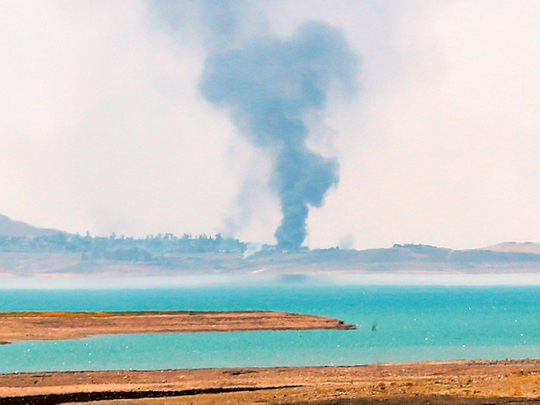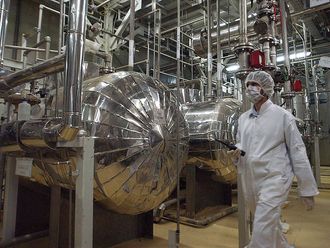
Washington: America has returned to war, of a sort, in Iraq with air strikes that have intensified in recent days against Islamic State of Iraq and the Levant (Isil) militants. But details about the execution of this limited campaign, which so far includes no reported US ground combat, are thin.
Some questions and answers about the mission, which began August 8.
Which US forces are involved?
The specifics are hard to pin down in part because, as in any US overseas conflict, many of the contributors work behind the scenes, sometimes in secret. We do know that the US has about 750 military personnel in Iraq, not counting the 100 who have worked out of the US Embassy in Baghdad since before this crisis began.
None of the 750 are engaged in ground combat, but that does not mean they are not at risk.
Among the 750 are about 160 at what the military calls “joint operation centers”- one in Baghdad and another in Arbil, the capital of the semi-autonomous Kurdish region that is near the center of the latest fighting. Those 160 military personnel are coordinating with Iraqi and Kurdish military officials in support of their efforts to defend Arbil, including the US Consulate there, and surrounding territory from the Islamic State group.
Who is carrying out the air strikes?
The only portion of the air campaign that has been discussed publicly in detail is the work being done by a range of Navy aircraft launching off the USS George H.W. Bush aircraft carrier in the Arabian Gulf area. These include F/A-18F Super Hornets, which carried out the first strikes authorized by President Barack Obama.
Also flying are EA-6B Prowlers, which are electronic warfare planes designed to suppress enemy air defences on the ground.
Speaking Wednesday from aboard the Bush, Rear Adm. DeWolfe H. Miller III, commander of the carrier strike group, said in a telephone interview with Washington reporters that his F/A-18F planes have launched about 30 strikes in Iraq. He would not talk about any air defenses his pilots may have encountered over Iraq.
What about the Air Force?
The Air Force has said little about its combat role, although it is widely known inside the military that its F-15E attack planes as well as B-1 bombers and armed drones have participated in the campaign. The Air Force also flies aerial refuelling missions that enable attack planes to remain over target areas for extended periods.
Where are the Air Force planes flying from?
US Central Command, which is responsible for all US military operations in Iraq and across the greater Middle East, will not say what bases are being used. It is no secret inside the Pentagon that the US is flying some of its Iraq missions from Al Udeid air base in Qatar. The US has an advanced air operations center at Al Udeid but specifics are rarely acknowledged publicly” it used the centre to coordinate air operations during the 2003-11 Iraq War as well as the war in Afghanistan. The US also has considerable ground and air forces in Kuwait.
How many targets have been bombed in Iraq so far?
Central Command said Wednesday that it has conducted a total of 84 air strikes since Aug. 8. That includes 14 on Wednesday against a range of Isil militant targets in the vicinity of a Tigris River dam just north of Mosul, the largest city in northern Iraq. Of the 84 strikes, 51 have been in support of Iraqi forces near the dam. President Barack Obama declared Monday that Iraqi and Kurdish forces had recaptured the dam.
What else is being struck?
US warplanes have hit a wide range of Isil militant targets, including artillery, armored personnel carriers, armored Humvees, light trucks, mortar positions, checkpoints and roadside bomb emplacements.
There’s the potential for the air campaign to expand into Syria, in which case the US would have to call on aircraft and other elements of its military based in the Middle East and possibly Europe.












